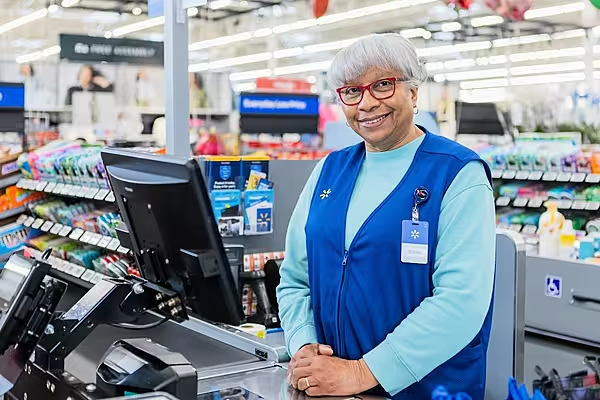Walmart Stores expects US e-commerce sales to surge by 40% in the next fiscal year, as its online investments allow the retail giant to play catch-up with Amazon.
The company also plans to add 1,000 online grocery locations – roughly double the current number of sites – which help fill orders from customers buying their food on Walmart.com. Total sales, meanwhile, are expected to grow at or above 3%, the retailer said as part of a forecast issued ahead of its next shareholder meeting.
The upbeat guidance sent Walmart shares up as much as 2.6%, to $82.62, in early trading. That follows a 17% increase this year.
E-Commerce Bet
The outlook lends evidence to the view that Walmart’s company-changing bet on e-commerce is beginning to pay off. Chief executive officer Doug McMillon has channelled more than one third of the business’s capital spending budget into digital initiatives like specialised e-commerce distribution centres, up from just 20% a few years ago.
“It is clear that Walmart intends to continue to turn up the heat online,” Moody’s Corp. analyst Charlie O’Shea said via a note. “We still believe Amazon’s lead in online retail is insurmountable, however, Walmart continues to widen the gap between itself and all other bricks-and-mortar retailers.”
Walmart’s investments in e-commerce have already helped boost sales. The US online division saw increases of at least 60% in the past two quarters – four times the growth rate of the broader e-commerce sector. Walmart has introduced a simpler way to reorder products bought frequently and free shipping on orders of $35 or more, and it’s offering discounts on thousands of items purchased online and picked up at a store.
The online push has come at a cost, however: profit margins on online orders are narrower than those for in-store sales, due to fulfilment expenses. In the second quarter, Walmart’s gross-profit margin narrowed for the first time in two years.
Voice Orders
The company also is teaming up with Google to let shoppers order by voice, and it said that it’s making the returns process simpler and faster for customers who use its mobile shopping app. It’s also rolled out kerbside pickup of online grocery orders in about 1,000 of its US stores, putting it way ahead of rival Target, which only offers the service for non-perishable items in its hometown of Minneapolis.
Wal-Mart also announced plans to buy back $20 billion in shares in fiscal 2019, which ends around January of that year, and the company reiterated its profit target for the current year, saying that earnings would be $4.18 to $4.28 a share. Earnings will climb about 5% in fiscal 2019, also in line with previous guidance, Walmart said.
“We have good momentum in the business,” McMillon said in a statement. “We’re executing our strategy and moving with speed to win with the customer, who is more connected than ever.”
Grocery Lead
Online sales still account for a small percentage of Walmart’s revenue, and no one expects it to overtake Amazon in e-commerce orders. That company generated the majority of its roughly $136 billion in sales from online shopping last year.
In the second quarter, 62% of all US Internet users visited Amazon – a “remarkably high number,” according to Wells Fargo & Co. analysts – illustrating just how deeply the company has penetrated the online market.
Walmart’s investments should help the company maintain its lead in the grocery market, even as more customers move online, according to Moody’s Charlie O’Shea.
“[Walmart has] unmatched physical resources, including stores and supply chain, and, in the process, is providing consumers with a compelling online alternative to Amazon,” O’Shea said.
News by Bloomberg, edited by ESM. Click subscribe to sign up to ESM: The European Supermarket Magazine.













